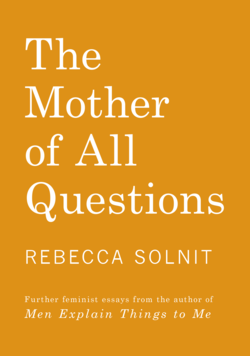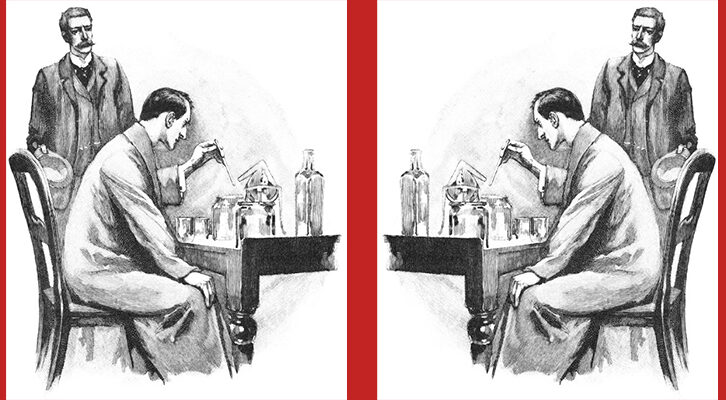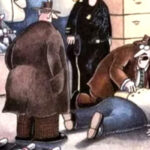
Rebecca Solnit on Silence, Pornography, and Feminist Literature
From Virginia Woolf to Betty Friedan to Audre Lorde...
The following is part IV of the longer essay “Silence is Broken,” from Rebecca Solnit’s new essay collection, The Mother of All Questions.
“I want to write a novel about silence. The things people don’t say.”
–Virginia Woolf
A feminist literature investigates the nature of those silences, their causes, and their effects, peaking in the 1970s and early 1980s with a plethora of essays on silence. Mary Wollstonecraft and 19th-century feminists addressed exclusion and powerlessness, including the exclusion from education. Suffragists pointed out that to be without the vote was to be silenced politically, excluded from full citizenship, self-determination, and the public sphere. Charlotte Perkins Gilman spoke in 1911 of women “hedged in with restrictions of a thousand sorts… the enforced ignorance from which women are now so swiftly emerging.” In the era when women had gained the vote—in 1920 in the United States, in 1918 in Britain—but lacked so much else, the investigation of silence continued.
Virginia Woolf sounded the alarm in two landmark essays. The more famous “A Room of One’s Own” came out in 1929, based on a pair of talks in 1928, about the practical, financial, social, and psychological restrictions on women writing and, by implication, having a voice. But what kind of a voice could she have? Adrienne Rich wrote, half a century later,
I was astonished at the tone of effort, of pains taken, of dogged tentativeness in the tone of that essay. And I recognized that tone. I had heard it often enough, in myself and in other women. It is the tone of a woman almost in touch with her anger, who is determined not to appear angry, who is willing herself to be calm, detached, and even charming in a roomful of men where things have been said which are attacks on her very integrity. Virginia Woolf is addressing an audience of women, but she is acutely conscious—as she always was—of being overheard by men.
Woolf’s “Professions for Women,” originally delivered as a speech to the National Society for Women in 1931, addresses the other kind of voice, not the convincing one Rich criticized (and women’s tone of voice is so often criticized), but the comforting one. She describes the internalized instructions to women to be pleasant, gracious, flattering, that can silence a real voice and real thoughts: a real self. She indicates that there are ways to speak that are silence’s white noise: the platitudes and reassurances, the politenesses and denials that lubricate a system that perpetuates silence. You speak for others, not for yourself. Woolf talked about the voice within women that tells them, “Be sympathetic; be tender; flatter; deceive; use all the arts and wiles of our sex. Never let anybody guess that you have a mind of your own.” She called that voice the Angel in the House and boasted of murdering her, out of necessity, so that she might have a voice. So that she might break the silence.
Half a century later, in her book Pornography and Silence, Susan Griffin quoted Norman Mailer on Marilyn Monroe: “She is a mirror of the pleasure of those who stare at her.” Meaning that Monroe appeared, and she spoke, but how she appeared, what she said, was not to express herself, to be herself, but to serve others. Griffin comments, “Yet knowing that her symbolic existence was a mask he refuses to look behind this mask. And yet, had another self not existed, a self to be lost and a self to be violated, the life of this actress would not have been a tragedy…” It was an analysis of how someone can be visible, audible, yet silenced.
Monroe can stand in for any woman, all women who silence, hide, disguise, or dismiss aspects of themselves and their self-expression in pursuing male pleasure, approval, comfort, reinforcement. This is not only erotic business; it’s how a woman in the workplace or the classroom or on the street may have learned to navigate around male expectations, knowing if she is too confident, commanding, or self-contained she may be punished. It has its analogies—my friend Garnette Cadogan has written eloquently, excruciatingly, about how he as a Black man in public has to incessantly perform “not-a-criminal, not-a-threat” to assuage white fear and preserve himself.
Mailer, in calling Monroe a mirror of pleasure, fails to question what happens when the pleasure is routinely someone else’s. It’s a death of pleasure disguised as pleasure, a death of self in the service of others. It’s silence wrapped in pleasing nothings. The portrait of Monroe, who died young in 1962, is a sort of bookend to bell hooks’s observation about men’s “psychic self-mutilation”—it is a portrait of the other kind of self-mutilation, to make a self to meet and serve those mutilated selves. A silence to meet the silence, silences that fit each other like a mold and casting, a ghost story.
Tillie Olsen gave a talk in 1962, published in 1965 in Harper’s, that became part of her bestselling 1978 book Silences. Silence, or the desire to interrogate and annihilate it, had come of age. It begins, “Literary history and the present are dark with silences, some the silences for years by our acknowledged great; some silences hidden; some the ceasing to publish after one work appears; some the never coming to book form at all.” In other words there were kinds of silence, one kind for what was said and what remained unsaid and another for who said it and who was permitted to speak.
She takes time to come to her real subject, as though she must establish her credentials first, her knowledge and care for the great literature by men. Then she turns to the silence of women in literature, noting that most who had literary careers had no children, because time to oneself and for oneself and one’s voice is crucial to creation. That was about practical silence—the lack of time to build the palace of words that is an extended piece of writing—but there are many kinds of silence that pertained to women’s experience at the time. The second half of the book was a broad collection of “asides, amulets, exhumations, sources,” broadening the evidence for the silencing of women, and its consequences not only to women but to literature. A brief for the defense.
Betty Friedan’s 1963 The Feminine Mystique was about “the problem that has no name,” about American women who lived in material comfort yet in social and political annihilation in their exclusion from public life and power at home and in the world. It can be and has been critiqued as a book about middle-class white women; it can also be appreciated as a book that, during the war on poverty and the civil rights movement, said that gender was also a problem worth contemplating, and that naming is a crucial part of transformation.
What gets called second-wave feminism is full of accounts of revelations about oppressions that were not previously named or described, and of the joy in recognizing even oppression: diagnosis is the first step toward cure and recovery. To speak of, to find definitions for what afflicted them brought women out of isolation and into power. The writings of the 1960s and 1970s are a literature of exploration, even revelation: people stumble forward, not sure what they are encountering, describing it awkwardly, reaching for new language for things that have not been described before, seeing the new undermine assumptions about the familiar, becoming people who belong to this new territory as much or more than to the old one, crossing over to a world being invented as they go.
Voyages of discovery: a key part of the feminist movement of the 1970s was “consciousness-raising groups,” in which women talked to each other about their experience. Susan Griffin, an important participant in that era’s feminism, told me that first they complained about housework, and then they started talking about rape and violence and the grim stuff, breaking through the shame that had kept them silent and alone. The poet Muriel Rukeyser’s lines, “What would happen if one woman told the truth about her life? The world would split open,” were often cited. What happened when many women told the truth about their lives? Silence itself became a key topic.
In 1977, Audre Lorde addressed the Modern Language Association with her landmark talk and essay considering race, gender, and orientation together, “The Transformation of Silence Into Language and Action” (published in 1984). It’s a brief, dense, aphoristic essay with some of the urgency of a manifesto:
My silences had not protected me. Your silence will not protect you. But for every real word spoken, for every attempt I had ever made to speak those truths for which I am still seeking, I had made contact with other women while we examined the words to fit a world in which we all believed, bridging our differences. And it was the concern and caring of all those women which gave me strength…
Lorde addressed the way that breaking silence was not only an act of courage but also of creation: “What are the words you do not yet have? What do you need to say? … Each of us is here now because in one way or another we share a commitment to language and to the power of language, and to the reclaiming of that language which has been made to work against us.”
In 1978, Jamaican-born Michelle Cliff published “Notes on Speechlessness,” which dealt with avoiding the powerful speech that describes experience truly but also explored experimental means to get at elusive truths: “Both withdrawal and humor are types of speechlessness. The obscuring and trivialization of what is real is also speechlessness.” She wrote about bad dreams, wrote in fragments, wrote about herself but also about political and literary history, outed herself as a lesbian and addressed the way that passing as straight was a masquerade, another route around truth. Cliff’s essay concludes that she will seek to eliminate what has eliminated her: “This means nothing more or less than seeking my own language. This may be what women will do.”
Her lover and partner, Adrienne Rich, titled one of her books of poetry The Dream of a Common Language. The crucial poem in that book is “Cartographies of Silence”: it speaks of a “conversation [that] begins / with a lie” and of “the scream / of an illegitimate voice.” At the end of the long piece, truth breaks out like a new-growing thing, green. Many of the women who spoke up about silence were lesbians, including Griffin and Rich; some were also Black, including Cliff and Lorde. Though intersectionality is a term that has only recently come into wide use, these women understood what it means to operate at an intersection or at many. Rich’s book came out the year before Cliff’s essay; it includes, for the first time in her abundant body of work, lesbian love poems.
Two years later, in 1979, Rich published the essay anthology On Lies, Secrets, and Silence, in which her critique of Woolf’s “A Room of One’s Own,” quoted above, appears. Elsewhere in the book she wrote,
I believe any woman for whom the feminist breaking of silence has been a transforming force can also look back to a time when the faint, improbable outlines of unaskable questions, curling in her brain cells, triggered a shock of recognition at certain lines, phrases, images, in the work of this or that woman, long dead, whose life and experience she could only dimly try to imagine.
Once unaskable, the questions were being asked. In 1980, Rich added to her critique with the landmark essay “Compulsory Heterosexuality and Lesbian Existence,” looking at the way that the identity and activity of a significant sector of women was overlooked or excluded and how that distorted the possibilities of living and understanding for all of us. She wrote of one popular feminist book of the time that it “ignores, specifically, the history of women who as witches, femmes seules, marriage resisters, spinsters, autonomous widows, and/or lesbians—have managed on varying levels not to collaborate. It is this history, precisely, from which feminists have so much to learn and on which there is overall such blanketing silence.” She was a great explorer.
She questioned heterosexuality as a norm: “The assumption that ‘most women are innately heterosexual’’ stands as a theoretical and political stumbling block for many women. … the failure to examine heterosexuality as an institution is like failing to admit that the economic system called capitalism or the caste system of racism is maintained by a variety of forces.” She writes of how lesbian lives had themselves been silenced, along with the possibility that heterosexuality is not natural “but something that has had to be imposed, managed, organized, propagandized and maintained by force.” A new city of ideas and possibilities was being built, like a material city, by an accretion of projects, labors, decisions, and desires, and women were taking up residence in it.
The feminism of the 1970s is full of the joy and fury of recognition and the power that comes with recognition even of terrible things. What can be recognized can be remedied or resisted. In the third novel of her Naples quartet, Elena Ferrante describes her protagonist’s discovery of feminist analysis in the 1970s: “How it is possible, I wondered, that a woman knows how to think like that? I worked so hard on books, but I endured them, I never actually used them, I never turned them against themselves.” She sees, for the first time, what the world might look like from outside the assumptions that circumscribed her sense of possibility for herself, for her gender, for her language. She sees that she has lived her life in a city of men.
Some of the feminists of that era, notably Catherine MacKinnon and Andrea Dworkin, spoke out against one form of speech and representation—pornography—on the grounds that it contributed to the subjugation of women. Their work led to marches, demonstrations, legal cases, and bans that were overturned on free-speech grounds. Others in the movement defended pornography, either in and of itself or as free speech. (The defiant title of the journal Off Our Backs was mocked by the lesbian erotic magazine On Our Backs.) The antiporn feminists were much vilified, and they were also misremembered as a monolith with puritanical arguments, the foil to a liberatory libertinage.
It was more complicated than that (and the position that misogynistic pornography can encourage and model actual misogyny only requires you to accept the reasonable idea that representations have power and influence). As with internet harassment in the present, the question of what is free speech—when some speech may impede others’ right and ability to speak and be heard—was raised.
Susan Griffin’s 1981 book Pornography and Silence made an original argument: that mainstream pornography could be imagined not as liberatory speech, as free voices that should be heard, but as a particular kind of repression. She wrote that “pornography is an expression not of human erotic feeling and desire, and not of a love of the life of the body, but of a fear of bodily knowledge and a desire to silence eros.” Pornography, in her view, was not erotic—if erotic meant the full and open experience of the body, the self, the emotions, and the other—but its opposite, full of “the metaphysics of Christianity… a modern building built on the site of the old cathedrals, sharing the same foundation.”
That foundation includes loathing for the flesh, fury at desire, and a projection of that desire and that fury onto women. “We will come to see that ‘the woman’ in pornography, like ‘the Jew’ in anti-Semitism and ‘the black’ in racism is simply a lost part of the soul, that region of being the pornographic or the racist mind would forget and deny.” Her work since then has often sought the opposite: to remember, to admit, to enlarge the spaces in which we might be, dream, think, love, and celebrate the erotic and sensual.
The debate over pornography never stopped. In 1993, philosopher Rae Langton took up the topic in a remarkable, rigorous essay, “Speech Acts and Unspeakable Acts.” Her exploration and analysis shed light far beyond pornography. She begins by refocusing the debate from what the content of speech is to what it does, what its power is. She points out that with language we marry, vote, render verdicts, give orders—or don’t, if we lack the power to do so. In her terms, a master saying, “I want food” to a slave is giving an order, the slave uttering the same words is making an appeal; the power each holds has everything to do with what their words mean and do. Or cannot do.
Langton discusses whether pornography carries authority as instruction as well as entertainment, and cites evidence to suggest that a high percent of boys and young men regard men’s satisfaction as a right and women’s rights as an irrelevancy, as well as statistics on date rape and men who find women in pain erotic. She outlines three kinds of silence. The first is the literal silence of intimidation or defeat. The second is when the speaker lacks a listener, a response. Then she concludes, “If pornography silences women, then it prevents women from doing things with their words.”
This third kind of silence “happens when one speaks, one utters words, and fails… to perform the very act one intends.” That act is of forbidding, of saying no. “It is indeed possible to silence someone… by making their speech acts unspeakable… Consider the utterance ‘no.’ We all know how to do things with this word. However, in sexual contexts something odd happens. Sometimes a woman tries to use the ‘no’ locution to refuse sex, and it does not work. Refusal—in that context—has become unspeakable for her. In this case refusal is not simply frustrated but disabled.” She explores the ramifications. “Someone learning the rules of the game from this kind of pornography might not even recognize an attempted refusal.”
In her 2016 book Girls and Sex, Peggy Orenstein confirmed this erasure of voice, writing, “In a study of behaviors in popular porn, nearly 90% of 304 random scenes contained physical aggression toward women, who nearly always responded neutrally or with pleasure. More insidiously, women would sometimes beg their partners to stop, then acquiesce and begin to enjoy the activity, regardless of how painful or debasing.” Elsewhere she notes, “Male and female college students who report recent porn use have been repeatedly found to be more likely than others to believe ‘rape myths’; that only strangers commit sexual assault or that the victim ‘asked for it.’ … Female porn users are less likely than others to intervene when seeing another woman being threatened or assaulted and are slower to recognize when they’re in danger themselves.” That is, pornography has become instructional to women as well as men, and the instructions can deafen them to the voices of women, even to their own voices. Silence travels through many avenues.
I sometimes imagine porn as a compensatory parallel universe where male privilege has been augmented and revenge on female power is incessantly exacted. (Several years ago, Sam Benjamin wrote, of his career as a young director in the capital of mainstream porn, the San Fernando Valley, “While my overt task at hand was to make sure that the girls got naked, my true responsibility as director was to make sure the girls got punished.”) The unmeasurably vast quantity of porn now in existence takes innumerable forms, and there are undoubtedly many exceptions. The mainstream product, however, seems more about the eroticization of power than the power of eros. Much in it that is described as heterosexual has a homoerotics of masculine triumph; it’s like a sport in which the excitement is that women are endlessly defeated.
Silence and shame are contagious; so are courage and speech. Even now, when women begin to speak of their experience, others step forward to bolster the earlier speaker and to share their own experience. A brick is knocked loose, another one; a dam breaks, the waters rush forth. In the 1970s and 1980s, women talking about being molested as children and harassed and assaulted as adults had a huge practical impact. Laws and the enforcement of laws shifted. But these stories were also an assault on the impunity of authority, an authority that had often been indistinguishable from patriarchy. These stories said that authority was not necessarily to be trusted; that power was liable to be abused.
They were part of the great anti-authoritarian uprising that sometimes gets called the 1960s, though the 60s are often reduced to young white men or to college students opposing a war, not acknowledging the breadth of many movements—civil rights and racial justice, including Native American and Latino and Asian as well as Black constituencies, gay and lesbian rights, disability rights, and environmental and anticolonial and anticapitalist critiques—that changed the foundations of our conversations. It was like wealth redistribution, but the redistribution was of audibility, credibility, value, participation, power, and rights. It was a great leveling, still going on—with backlashes seeking to shove people back into the silence from which they emerged.
Sometime in the teens of the 21st century, a new round of feminist conversation began, in part in response to atrocities and to the breaking of silence about atrocities, including campus rape (thanks to campus organizers, many of them rape survivors themselves). A number of stories garnered attention on an almost unprecedented scale, and the intersection of a less misogynistic mainstream media and feminists on social and alternative media generated a fiercely lively new conversation.
On a number of occasions in recent years, a notable case of gender violence—the Isla Vista massacre in Santa Barbara, Ghomeshi’s attacks in Canada, football player Ray Rice’s domestic violence in New Jersey, the Stanford rape case—has led women to testify on social media. Some just share the hashtags: #yesallwomen; #whyIstayed and #whyIleft, about domestic violence; #ibelieveher, in support of Ghomeshi’s victims; #iwasrapedtoo, in response to the 2016 Stanford case; #notokay, the label for more than 27 million tweets from women telling their own stories about being sexually assaulted, in response to the videotape of presidential candidate Donald Trump talking about grabbing women “by the pussy.”
Sometimes men participated in the sharing of the hashtags or supporting the speakers. Men actively speaking and acting on behalf of women’s rights and feminism has been one of the steps forward in recent years (while there were also so many steps back). Social media also became the scene of furious campaigns to silence women who spoke up about violence against women and misogyny, and Twitter in particular tolerated extended campaigns of rape and death threats. It has become a new platform both for breaking the silence and trying to enforce it through threats and intimidation. “Online harassment has become the intellectual equivalent of street harassment,” said media critic Jennifer Pozner after the Black actress Leslie Jones was harassed, insulted, and bullied into leaving Twitter. “It is the attempt to police and punish women for being in a public space. It’s men and boys saying, ‘Stay out of my playground.’”
Even the Guardian took stock of its vitriolic comments section in 2016 and reported that eight of its most attacked columnists were women, two were men of color, and the most attacked of all was feminist Jessica Valenti. This recent campaign to silence women online is far from over, though many things suggest that it is a backlash, an attempt to push back what has marched forward, to silence what has been heard. Social media is a double-edged sword, one that allows liberatory campaigns and communications by and to those pushed to the margins but also permits endless hatred from the center to silence those margins. The marginalized will not be silent, nor will they stay in the margins.
In the beginning was the word. Before that was silence, and silence surrounds spoken words, still, as whiteness surrounds the words on paper. There is always something unsaid and yet to be said, always someone struggling to find the words and the will to tell her story. Every day each of us invents the world and the self who meets that world, opens up or closes down space for others within that. Silence is forever being broken, and then like waves lapping over the footprints, the sandcastles and washed-up shells and seaweed, silence rises again.
We make ourselves in part out of our stories about ourselves and our world, separately and together. The great feminist experiment of remaking the world by remaking our ideas of gender and challenging who has the right to break the silence has been wildly successful and remains extremely incomplete. Undoing the social frameworks of millennia is not the work of a generation or a few decades but a process of creation and destruction that is epic in scope and often embattled in execution.
The task of calling things by their true names, of telling the truth to the best of our abilities, of knowing how we got here, of listening particularly to those who have been silenced in the past, of seeing how the myriad stories fit together and break apart, of using any privilege we may have been handed to undo privilege or expand its scope is each of our tasks. It’s how we make the world.

From Rebecca Solnit’s The Mother of All Questions, courtesy Haymarket Books. Copyright 2017, Rebecca Solnit.
Rebecca Solnit
Writer, historian, and activist Rebecca Solnit is the author of more than twenty-five books on feminism, western and urban history, popular power, social change and insurrection, wandering and walking, hope and catastrophe. Her books include this year’s No Straight Road Takes You There, as well as Orwell's Roses, Recollections of My Nonexistence; Hope in the Dark; Men Explain Things to Me; and A Paradise Built in Hell: The Extraordinary Communities that Arise in Disaster. A product of the California public education system from kindergarten to graduate school, she writes regularly for the Guardian and serves on the boards of the climate groups Oil Change International and Third Act.



















